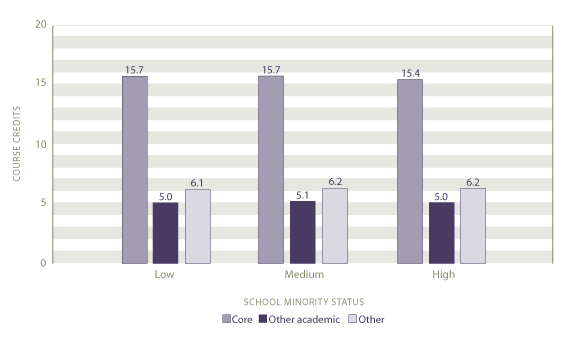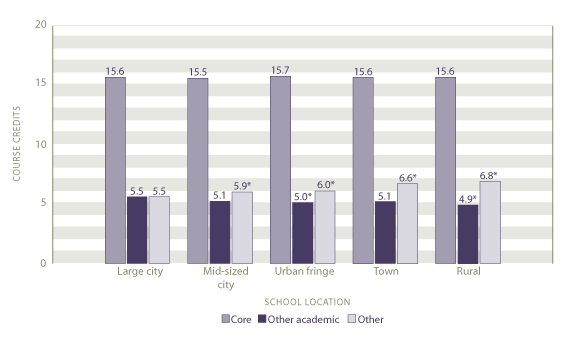School minority status School location
Credits earned, by course type and school minority status

NOTE: Low minority schools have less than 5 percent disadvantaged minority students; medium minority schools have 5-50 percent disadvantaged minority students; high minority schools have over 50 percent disadvantaged minority students. View data with standard errors for school minority status.
Credits earned, by course type and school location

*Significantly different from large city.
NOTE: View data with standard errors for school location.